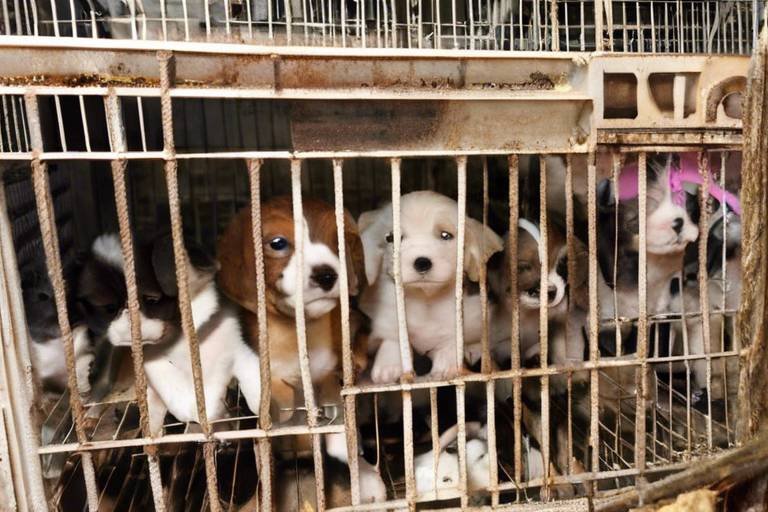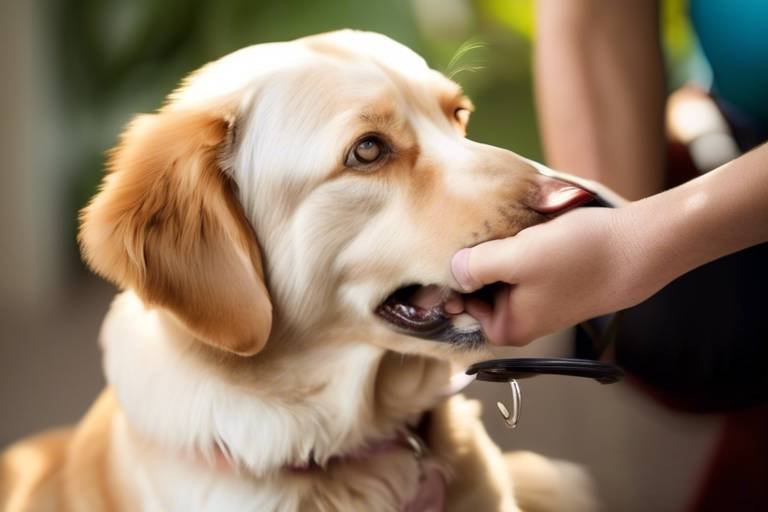The Role of Pet Adoption in Combating Animal Cruelty
In a world where countless animals suffer from neglect and abuse, pet adoption emerges as a beacon of hope. It not only provides a loving home for pets in need but also plays a crucial role in combating the cycle of animal cruelty. When you adopt a pet, you are taking a stand against the injustices faced by these innocent creatures. Instead of supporting the industries that contribute to animal suffering, you become a part of a solution that promotes love, compassion, and responsibility.
Imagine walking into a shelter, where you’re greeted by the wagging tails and hopeful eyes of animals yearning for a second chance. Each adoption is a victory, not just for the pet but for society as a whole. By choosing to adopt rather than shop, you are sending a powerful message: you value life and believe that every animal deserves a loving home. This simple act can ripple through communities, inspiring others to consider adoption and fostering a culture of empathy and kindness.
Moreover, the benefits of pet adoption extend beyond just rescuing animals. Adopting a pet can enrich your life in numerous ways. The unconditional love and companionship provided by pets can significantly improve your mental health, offering emotional support during tough times. Studies have shown that pet owners often experience lower levels of stress and anxiety, leading to a happier, healthier life. When you adopt, you’re not just saving a life; you’re enhancing your own.
To truly understand the impact of pet adoption, we must also acknowledge the harsh realities of animal cruelty. This issue is multifaceted, ranging from neglect and abandonment to exploitation in breeding. By raising awareness about these problems, we can better appreciate the importance of adopting pets from shelters. Each adoption helps break the cycle of cruelty, offering a safe haven to those animals who have suffered the most.
As we delve deeper into the benefits of pet adoption, it’s essential to recognize how it fosters community engagement. Local shelters often rely on community support to operate effectively. When people adopt pets, they contribute to a larger cause, promoting initiatives aimed at reducing the stray population and advocating for animal welfare. This collective effort not only helps animals but also builds a sense of community and responsibility among residents.
In conclusion, the role of pet adoption in combating animal cruelty cannot be overstated. It is a powerful tool that saves lives, improves mental health, and strengthens communities. Each time someone chooses to adopt, they are making a profound statement against cruelty and for compassion. Let’s work together to spread the word about the importance of adoption and encourage more people to open their hearts and homes to pets in need.
- Why should I adopt instead of buying a pet? Adopting saves lives, reduces the number of homeless animals, and often comes with the benefit of a pet that is already vaccinated and spayed/neutered.
- What types of pets can I adopt? Shelters typically have a variety of pets available for adoption, including dogs, cats, rabbits, and sometimes even exotic animals.
- How can I prepare for a new pet? Research the needs of the specific pet you’re adopting, prepare your home with necessary supplies, and ensure you have a plan for training and socialization.
- What if I can’t adopt a pet right now? You can still help by volunteering at local shelters, donating supplies, or spreading the word about the importance of pet adoption.

The Importance of Pet Adoption
Pet adoption is not just a noble act; it’s a lifeline for countless animals waiting for a second chance. Every year, millions of pets find themselves in shelters, often through no fault of their own. They may have been abandoned, surrendered due to unforeseen circumstances, or rescued from dire situations. By choosing to adopt, you are not only saving a life but also making a conscious decision to combat the ongoing crisis of homeless animals.
Imagine walking into a shelter and seeing rows of hopeful eyes staring back at you. Each animal has a story, filled with dreams of finding a loving home. Adoption provides these pets with a warm place to call home, a family to love, and a chance to thrive. It’s a beautiful cycle: when you adopt a pet, you give them a new lease on life, and in return, they offer unconditional love and companionship. Isn’t that a win-win?
Moreover, adopting pets helps reduce the number of animals in shelters, which are often operating at capacity. When you adopt, you’re making space for another animal in need, breaking the cycle of neglect and abandonment. This is crucial because the more pets that are adopted, the fewer that are left to suffer. It’s a simple yet powerful equation: adopt save lives.
Pet adoption also plays a vital role in addressing the issue of animal cruelty. When people choose to adopt rather than shop, they are making a statement against the unethical practices often associated with breeding. Many breeders prioritize profit over the well-being of animals, leading to exploitation and poor living conditions. By opting for adoption, you are sending a clear message that animal welfare matters.
Additionally, the benefits of pet adoption extend beyond just the animals. Adopting a pet can enrich your life in numerous ways:
- Companionship: Pets provide a sense of belonging and companionship, helping to alleviate feelings of loneliness.
- Health Benefits: Studies have shown that pet ownership can lead to lower stress levels, reduced anxiety, and even improved cardiovascular health.
- Community Engagement: Adopting pets fosters a sense of community, encouraging responsible pet ownership and support for local shelters.
In conclusion, the importance of pet adoption cannot be overstated. It’s a compassionate choice that transforms lives—both for the animals and for the humans who welcome them into their homes. By choosing to adopt, you are not just giving an animal a home; you are becoming part of a larger movement that advocates for animal rights and welfare. So, the next time you’re considering adding a furry friend to your family, remember: adoption is the key to saving lives and making a positive impact in your community.
Q: What is the first step in adopting a pet?
A: The first step is to research local shelters and rescue organizations. Visit their websites or contact them directly to learn about available pets and their adoption processes.
Q: Are adopted pets healthy?
A: Most shelters ensure that pets are spayed/neutered, vaccinated, and checked for health issues before adoption. However, it’s always good to schedule a vet check-up after adoption.
Q: Can I adopt a pet if I have a busy lifestyle?
A: Yes! Many pets adapt well to different lifestyles. It’s important to choose a pet that matches your activity level and to ensure you can provide the attention and care they need.
Q: What if I want a specific breed?
A: While many shelters have mixed breeds, there are breed-specific rescues that focus on particular breeds. You can research these organizations to find the breed you prefer.

Understanding Animal Cruelty
Animal cruelty is a heartbreaking reality that affects countless creatures around the globe. It encompasses a range of abusive behaviors directed towards animals, and understanding its origins and consequences is essential for fostering responsible pet ownership and promoting adoption. When we think about animal cruelty, we often picture physical abuse, but the truth is that cruelty can take on many forms, each with its own devastating impact.
At its core, animal cruelty is driven by a variety of factors, including ignorance, lack of resources, and sometimes, sheer indifference. Many people may not even realize that their actions—or inactions—can contribute to the suffering of animals. For instance, neglecting an animal's basic needs, such as food, water, and shelter, is a form of cruelty that is often overlooked. This neglect can lead to severe physical and emotional distress for the animal, and in many cases, it can result in tragic outcomes.
To better understand the various manifestations of animal cruelty, it’s important to recognize the different types that exist. Here are a few key categories:
- Neglect: This includes failing to provide adequate food, water, shelter, or medical care.
- Physical Abuse: This involves intentionally inflicting harm or injury on an animal.
- Exploitation: This covers situations where animals are used for entertainment, research, or breeding without regard for their welfare.
Recognizing these types allows us to identify and combat these behaviors more effectively. For instance, neglect and abandonment are among the most common forms of animal cruelty that lead to suffering and death for many animals. When pets are left alone for extended periods, or if they are discarded like trash, they can face dire consequences. Highlighting these issues can serve as a wake-up call for potential pet owners, reminding them of the responsibilities that come with pet ownership.
Moreover, the exploitation of animals in breeding operations often leads to horrific living conditions. Animals in puppy mills, for example, are frequently kept in cramped, unsanitary environments, deprived of socialization and proper veterinary care. Understanding this cruel reality can motivate compassionate individuals to choose adoption over purchasing pets from breeders, ultimately saving lives and reducing the demand for such unethical practices.
As we delve deeper into the issue of animal cruelty, it’s crucial to explore the legal framework that exists to protect animals. Laws against animal cruelty vary widely from one region to another, but they generally aim to safeguard animals from harm. Familiarizing ourselves with these laws can empower us to advocate for animal welfare effectively. By supporting initiatives that promote adoption and responsible pet ownership, we can contribute to a society where animals are treated with the respect and kindness they deserve.
In conclusion, understanding animal cruelty is a vital step in combating it. By raising awareness about the various forms of cruelty and advocating for responsible pet ownership, we can create a brighter future for animals in need. Remember, every time you choose to adopt rather than shop, you’re not just saving a life; you’re also taking a stand against cruelty.
Q: What is animal cruelty?
A: Animal cruelty refers to harmful behaviors that cause suffering or distress to animals. This can include neglect, physical abuse, and exploitation.
Q: How can I help combat animal cruelty?
A: You can help by adopting pets from shelters, educating others about responsible pet ownership, and supporting local animal welfare organizations.
Q: What should I do if I suspect animal cruelty?
A: If you suspect animal cruelty, contact your local animal control or law enforcement agency to report your concerns. It's important to provide as much detail as possible.
Types of Animal Cruelty
Animal cruelty is a heartbreaking reality that manifests in various forms, each contributing to the suffering of countless animals. Understanding these types is crucial for anyone who wishes to advocate for animal rights and welfare. The most prevalent forms of animal cruelty include neglect, physical abuse, and exploitation. Each type has its own set of consequences, and recognizing them is the first step toward making a change.
Neglect is perhaps the most insidious form of cruelty. It often goes unnoticed until it is too late. Animals left without adequate food, water, shelter, or medical care can suffer immensely. This form of cruelty doesn’t always stem from malice; sometimes, it arises from ignorance or a lack of resources. However, the result is the same: animals endure unnecessary pain and suffering. For example, a pet left outside without proper shelter during harsh weather conditions can experience severe health issues, including hypothermia or heatstroke.
Physical abuse is another alarming type of animal cruelty that can include actions like beating, torturing, or otherwise harming animals. This form of cruelty is often driven by anger, frustration, or a misguided belief in dominance over animals. The impact of physical abuse is not just immediate; it can leave lasting psychological scars, making it difficult for the abused animals to trust humans again. Many of these animals end up in shelters, where they require extra care and rehabilitation before they can find a loving home.
Lastly, exploitation in breeding operations represents a significant issue within the realm of animal cruelty. Many animals are bred in deplorable conditions, often for profit, without regard for their health or well-being. Puppy mills are a notorious example of this type of cruelty, where dogs are kept in cramped cages, denied proper veterinary care, and subjected to extreme conditions. The puppies produced in such environments may face a lifetime of health problems, not to mention the emotional toll it takes on them.
Understanding these types of animal cruelty is essential for anyone who wants to make a difference. By recognizing the signs of neglect, abuse, and exploitation, we can take proactive steps to combat these issues. Whether it's reporting suspected abuse to authorities, supporting local shelters, or spreading awareness, every action counts in the fight against animal cruelty.
- What are the signs of animal neglect? Look for signs such as malnourishment, lack of veterinary care, inadequate shelter, and unsanitary living conditions.
- How can I report animal cruelty? You can report animal cruelty to local animal control or law enforcement agencies. Many regions also have dedicated hotlines for reporting abuse.
- What should I do if I suspect someone is abusing an animal? Document your observations and report them to the appropriate authorities. It's important to act quickly to protect the animal.
- How can I help combat animal cruelty? You can volunteer at local shelters, donate to animal welfare organizations, and educate others about the importance of responsible pet ownership and adoption.
Neglect and Abandonment
Neglect and abandonment are two of the most heart-wrenching aspects of animal cruelty, and they often go hand-in-hand. Imagine a furry friend, once a bundle of joy, left alone in a dark corner of a backyard or a cold, empty apartment. It's a scenario that plays out far too often, leading to immense suffering for countless animals. When pets are neglected, they may not receive the basic care they need, such as food, water, shelter, and medical attention. This lack of care can result in malnutrition, illness, and even death. Abandonment exacerbates the issue, as these animals are often left to fend for themselves, struggling to survive in an unforgiving world.
According to recent statistics, a staggering number of animals enter shelters each year due to neglect and abandonment. For instance, the American Society for the Prevention of Cruelty to Animals (ASPCA) estimates that approximately 3.3 million dogs and 3.2 million cats enter U.S. animal shelters annually. This influx is a direct result of irresponsible pet ownership, where individuals may not fully understand the commitment required to care for a pet. When the novelty wears off or life circumstances change, these pets are often the first to suffer, leading to their abandonment.
Recognizing the signs of neglect and abandonment is crucial for intervention. Some common indicators include:
- Physical Signs: Poor coat condition, extreme weight loss or gain, and untreated injuries.
- Behavioral Signs: Fearfulness, aggression, or excessive barking can indicate a troubled past.
- Environmental Signs: Living in unsanitary conditions, such as being confined to a small space filled with waste.
Highlighting the issues of neglect and abandonment is essential for raising awareness and encouraging people to adopt pets in need. By adopting, individuals not only provide a loving home but also play a pivotal role in breaking the cycle of neglect. When someone chooses to adopt, they are essentially saying "no" to the abandonment of innocent animals. They become part of a solution that fosters compassion and responsibility in pet ownership.
Moreover, community involvement is vital in addressing these issues. Local shelters and rescue organizations often run campaigns to educate the public about the importance of responsible pet ownership. By participating in these initiatives, individuals can help spread the word and encourage others to consider adoption as a viable option. Every small effort counts in the fight against animal cruelty.
In conclusion, neglect and abandonment are serious issues that demand our attention. By adopting pets and spreading awareness, we can collectively work towards a future where every animal has a loving home and the care they deserve. Together, we can create a society that values compassion and responsibility for all living beings.
- What should I do if I suspect an animal is being neglected?
If you suspect neglect, it's important to report it to local animal control or a rescue organization. They can investigate and take appropriate action. - How can I help reduce animal abandonment in my community?
You can help by promoting responsible pet ownership, participating in spay/neuter programs, and supporting local shelters through donations or volunteer work. - What are the signs that a pet needs to be adopted?
Signs include being in a shelter for an extended period, showing signs of distress, or being a part of a neglect case. Always consider adopting from shelters to give these pets a chance.
Exploitation in Breeding
When we think about pet ownership, we often envision fluffy puppies or adorable kittens frolicking in the yard. However, behind the scenes, many of these animals come from breeding operations that prioritize profit over the well-being of the animals. This exploitation in breeding is a significant contributor to animal cruelty, and it's crucial to understand its implications. Many breeding facilities, often referred to as "puppy mills," focus solely on producing as many animals as possible without regard for their health or happiness.
In these environments, animals are often kept in cramped, unsanitary conditions, leading to a myriad of physical and psychological issues. The breeding dogs, for instance, may be forced to breed continuously, which not only takes a toll on their bodies but also deprives them of the chance to experience a loving home. The puppies born in these facilities are frequently separated from their mothers too early, resulting in behavioral problems and health issues down the line.
Moreover, the lack of proper veterinary care in these breeding operations can lead to serious health complications. Conditions such as parvovirus, distemper, and various genetic disorders are rampant among animals bred in such environments. Understanding the harsh realities of these breeding practices can motivate potential pet owners to choose adoption over purchasing from breeders. By adopting, you not only save a life but also help break the cycle of exploitation that fuels animal cruelty.
To further illustrate the impact of breeding exploitation, consider the following table that outlines the differences between responsible breeding and puppy mills:
| Aspect | Responsible Breeding | Puppy Mills |
|---|---|---|
| Living Conditions | Clean, spacious, and nurturing | Cramped, unsanitary, and neglectful |
| Health Care | Regular veterinary check-ups and vaccinations | Minimal to no veterinary care |
| Socialization | Early and ongoing socialization with humans and other pets | Little to no socialization, leading to behavioral issues |
| Focus | Quality and health of the breed | Quantity and profit |
By shedding light on the dark side of breeding, we can encourage more people to adopt pets from shelters, where animals are waiting for a second chance at life. When you choose to adopt, you're not just gaining a furry friend; you're also taking a stand against the exploitation that fuels animal cruelty. It’s a powerful choice that can lead to a ripple effect in the community, inspiring others to follow suit and advocate for animal welfare.
- What is a puppy mill? A puppy mill is a breeding facility that prioritizes profit over the well-being of the animals, often resulting in poor living conditions and health issues.
- How can I tell if a breeder is responsible? Responsible breeders will ensure their animals are well cared for, provide health clearances, and allow you to meet the puppy’s parents.
- What are the benefits of adopting a pet? Adopting pets can save lives, provide companionship, and contribute to the reduction of stray animals in your community.
- How can I help combat animal cruelty? You can help by spreading awareness about the importance of adoption, supporting local shelters, and educating others about responsible pet ownership.
Legal Framework Against Animal Cruelty
The legal framework against animal cruelty serves as a crucial line of defense for our furry friends. Laws vary significantly across different regions, but the primary aim remains the same: to protect animals from harm and ensure their welfare. Understanding these laws is not just a matter of legal knowledge; it empowers individuals to advocate for animal rights and support initiatives that promote pet adoption.
In many places, animal cruelty laws encompass a wide range of abusive behaviors, from neglect and abandonment to physical abuse and exploitation. These laws typically define what constitutes cruelty and outline the penalties for offenders. For instance, some jurisdictions impose hefty fines or even jail time for individuals found guilty of severe animal abuse. This legal framework is essential, as it helps to deter potential offenders and provides a means of recourse for those who witness or suspect animal cruelty.
Moreover, laws against animal cruelty often include provisions for the humane treatment of animals in shelters and breeding facilities. These regulations are designed to ensure that animals are kept in safe, clean environments and receive proper medical care. Unfortunately, not all regions enforce these laws effectively, leading to ongoing issues of neglect and abuse. Therefore, it is vital for communities to stay informed about the laws in their area and advocate for stricter enforcement and improved animal welfare standards.
To illustrate the differences in animal cruelty laws across various regions, consider the following table:
| Region | Key Features of Animal Cruelty Laws | Penalties for Violations |
|---|---|---|
| United States | Varies by state; some states have felony charges for severe abuse | Fines up to $10,000; imprisonment up to 5 years |
| United Kingdom | Comprehensive laws under the Animal Welfare Act 2006 | Fines up to £20,000; imprisonment up to 6 months |
| Australia | State-based laws; significant penalties for cruelty | Fines up to AUD 50,000; imprisonment up to 2 years |
As you can see, the legal repercussions for animal cruelty can be quite severe, reflecting the importance society places on protecting animals. However, laws alone are not enough. It is essential to foster a culture of compassion and responsibility towards animals. This can be achieved through education and community engagement, encouraging individuals to report suspected cases of cruelty and to support local shelters and adoption initiatives.
In conclusion, understanding the legal framework against animal cruelty is vital for anyone who wishes to advocate for animal rights. By staying informed and actively participating in community efforts, we can help to create a safer environment for all animals. Together, we can fight against cruelty and promote the joy of pet adoption, ensuring that every animal has a loving home.
- What should I do if I suspect animal cruelty? If you suspect animal cruelty, it’s important to report it to local authorities or animal control. Document any evidence you have, such as photographs or videos, to support your claim.
- Can I adopt a pet if I have a busy lifestyle? Yes! Many pets are adaptable and can thrive in busy households. Consider adopting a pet that matches your activity level and lifestyle.
- How can I support local shelters? You can support local shelters by volunteering your time, donating supplies, or even fostering pets in need. Every bit of help counts!

Benefits of Adopting Pets
Adopting a pet is not just a noble act; it's a life-changing experience that brings countless benefits to both the animals and their new families. When you choose to adopt, you’re not only saving a life but also enriching your own. Imagine coming home to a wagging tail or a gentle purr, a constant reminder that you made a difference. The emotional rewards are immense, and they ripple out to the community as well.
One of the most significant benefits of adopting a pet is the companionship it offers. Pets have an incredible ability to fill our homes with joy and love. They become part of our families, offering unconditional love and loyalty. Studies have shown that having a pet can significantly reduce feelings of loneliness and depression. When you have a furry friend by your side, those tough days seem a little brighter.
Moreover, adopting a pet can lead to substantial emotional and physical health benefits. Research indicates that pet ownership can decrease stress levels, lower blood pressure, and even improve cardiovascular health. The simple act of petting a dog or cat can release oxytocin, the “feel-good” hormone, which helps to alleviate anxiety. It’s like having a little therapist at home, always ready to lend an ear—or a paw!
Additionally, adopting pets contributes to the well-being of our communities. When more people choose to adopt rather than shop for pets, it helps reduce the number of homeless animals. This, in turn, lowers the burden on shelters and rescues, allowing them to allocate more resources towards care and rehabilitation. The impact of pet adoption can be seen in the community engagement it fosters. Local initiatives often arise to support adoption drives, and these events can bring people together, creating a sense of shared responsibility for animal welfare.
Let's not forget the satisfaction that comes from knowing you've saved a life. Adopting a pet from a shelter means you’re giving a second chance to an animal that may have faced neglect or abandonment. It’s a rewarding experience that’s hard to match. Many adopters report feeling a profound sense of fulfillment, knowing they’ve made a positive impact in the world.
In conclusion, the benefits of adopting pets extend far beyond the individual. It's a ripple effect, enhancing the lives of pets, owners, and the community at large. As you consider the option of bringing a new furry friend into your life, remember that you’re not just gaining a pet; you’re making a choice that can change lives for the better.
- What are the costs associated with adopting a pet? Adoption fees can vary but often include vaccinations, spaying/neutering, and sometimes even initial supplies like food and a collar.
- How do I know if I'm ready to adopt a pet? Consider your lifestyle, living situation, and ability to commit time and resources to a pet's care.
- Can I adopt a pet if I have allergies? Yes, some breeds are more hypoallergenic than others. Researching these can help you find a suitable companion.
- What should I expect during the adoption process? The process typically includes an application, an interview, and sometimes a home visit to ensure a good fit.
Emotional and Physical Health Benefits
When you think about pets, what often comes to mind? Cuddly companions, wagging tails, and those soulful eyes that seem to understand you better than anyone else. Adopting a pet is not just about giving an animal a home; it’s about enriching your own life in ways you might not even realize. Studies have shown that pet ownership can significantly enhance both emotional and physical health, creating a bond that benefits both parties involved.
First, let’s talk about the emotional benefits. Imagine coming home after a long, exhausting day. The moment you step through the door, your furry friend greets you with uncontainable joy. This simple act can boost your mood instantly. Research indicates that pet owners often experience lower levels of stress, anxiety, and depression. The act of petting a dog or cat releases oxytocin, the “love hormone,” which promotes feelings of happiness and reduces stress.
Moreover, pets can provide a sense of purpose. Caring for a pet requires routine and responsibility, which can be particularly beneficial for individuals struggling with mental health issues. It’s like having a little cheerleader by your side, always there to remind you that you're needed and loved. This bond can be especially powerful for seniors or those living alone, offering companionship that alleviates feelings of loneliness.
Now, let’s not overlook the physical health benefits. Owning a pet often encourages a more active lifestyle. Dogs, for instance, require regular walks, which means more exercise for you! According to the Centers for Disease Control and Prevention (CDC), dog owners are more likely to meet their daily exercise requirements compared to non-pet owners. This increased activity can lead to improved cardiovascular health, weight management, and overall physical fitness.
Here’s a quick breakdown of some of the key emotional and physical health benefits of pet adoption:
| Health Benefits | Details |
|---|---|
| Reduced Stress | Petting animals releases oxytocin, lowering cortisol levels. |
| Decreased Loneliness | Pets provide companionship, reducing feelings of isolation. |
| Increased Physical Activity | Regular walks and playtime promote a more active lifestyle. |
| Enhanced Mood | Pets can elevate mood and provide emotional support. |
In conclusion, the emotional and physical health benefits of adopting a pet are profound and far-reaching. It’s not just about saving a life; it’s about enriching your own in the process. So, if you’ve been on the fence about adopting, remember that you’re not just giving a pet a home; you’re also inviting joy, companionship, and a healthier lifestyle into your life. Why not take the leap? Your future furry friend is waiting!
- What are the first steps to adopting a pet? Begin by researching local shelters and rescue organizations. Visit them to meet the pets available for adoption and ask about their adoption process.
- What should I consider before adopting a pet? Consider your lifestyle, living situation, and the time you can dedicate to a pet. Different animals have different needs, so choose one that fits your life.
- How can I prepare my home for a new pet? Make sure to pet-proof your home by removing hazards, securing loose wires, and providing a comfortable space for your new companion.
- Are there any costs associated with pet adoption? Yes, adoption usually comes with a fee that may cover vaccinations, spaying/neutering, and initial medical care. Additionally, consider ongoing costs like food, grooming, and veterinary care.
Community Impact of Pet Adoption
When we talk about pet adoption, we often focus on the joy it brings to individuals and families. However, the ripple effects of adopting a pet extend far beyond the home. The community impact of pet adoption is profound, creating a healthier environment and fostering a sense of responsibility among residents. Adopting pets from shelters not only saves lives but also helps in reducing the stray animal population, which is a significant issue in many urban areas.
One of the primary benefits of pet adoption is the promotion of community engagement. When people adopt pets, they often become more involved in local initiatives aimed at animal welfare. This can include volunteering at shelters, participating in fundraising events, or even advocating for local policies that protect animals. Such involvement fosters a sense of community spirit, as individuals work together towards a common cause.
Moreover, pet adoption can lead to a decrease in the number of stray animals on the streets. Stray animals can pose various problems for communities, including public health risks and safety concerns. By adopting pets, individuals help to break the cycle of overpopulation in shelters, which in turn reduces the number of animals that end up on the streets. This is not just beneficial for the animals; it also creates a safer environment for residents.
Additionally, pet adoption initiatives often spark local programs that focus on responsible pet ownership. These programs educate the public about the importance of spaying and neutering pets, regular veterinary care, and proper training. Such education is crucial for ensuring that adopted pets remain in loving homes and do not contribute to the stray population in the future.
To illustrate the community impact of pet adoption, consider the following table that highlights some key benefits:
| Benefit | Description |
|---|---|
| Reduction in Stray Population | Adoption helps decrease the number of homeless animals, leading to safer neighborhoods. |
| Community Engagement | Adopters often participate in local animal welfare initiatives, fostering community spirit. |
| Education on Responsible Pet Ownership | Programs educate the public, ensuring that adopted pets are well cared for. |
| Improved Mental Health | Communities with higher pet adoption rates often report better overall mental health among residents. |
In conclusion, the community impact of pet adoption is significant and multifaceted. By choosing to adopt, individuals not only change the lives of animals but also contribute to the well-being of their entire community. It's a win-win situation that promotes compassion, responsibility, and a healthier environment for everyone.
- What are the benefits of adopting a pet? Adopting a pet provides companionship, emotional support, and the satisfaction of saving a life.
- How can I get involved in pet adoption initiatives? You can volunteer at local shelters, participate in fundraising events, or advocate for animal welfare policies.
- What should I consider before adopting a pet? Consider your lifestyle, the time you can commit, and the type of pet that best fits your home environment.
- Are there any costs associated with pet adoption? Yes, there may be adoption fees, as well as ongoing costs for food, veterinary care, and supplies.

Encouraging More Adoptions
To combat animal cruelty effectively, it's essential to promote pet adoption actively. The journey to encouraging more adoptions begins with awareness. Many people are simply unaware of the plight of homeless animals and the benefits of adopting a pet. By spreading the word through community events, social media campaigns, and local outreach programs, we can shine a light on the many furry friends waiting for a loving home. Imagine walking through a shelter filled with wagging tails and hopeful eyes; each pet has a story, and every story deserves a chance at happiness.
One impactful way to promote adoption is through awareness campaigns. These campaigns can include informative workshops, engaging social media posts, and heartwarming success stories from previous adopters. When people see the joy that comes from adopting a pet, they are more likely to consider it themselves. For instance, sharing videos of adopted pets enjoying their new homes can create an emotional connection that inspires others to take action.
Additionally, forming partnerships with local shelters can significantly enhance adoption rates. By collaborating with these organizations, we can create events that bring potential adopters directly to the animals in need. Picture a community fair where families can meet pets, learn about their backgrounds, and even participate in fun activities. Such events not only raise awareness but also foster a sense of community responsibility towards animal welfare.
Moreover, we can leverage the power of technology to connect people with pets. Creating user-friendly websites and mobile apps that showcase animals available for adoption can make the process easier and more accessible. These platforms can feature detailed profiles of pets, including their personalities, needs, and adoption stories, making it easier for potential adopters to find their perfect match.
In addition to these strategies, we can also engage local businesses to support adoption initiatives. For example, pet supply stores could offer discounts to adopters, while veterinary clinics might provide free check-ups for newly adopted pets. Such collaborations can incentivize adoption and show that the community stands behind this noble cause.
Ultimately, the key to encouraging more adoptions lies in creating a culture of compassion and responsibility towards animals. By educating the public, forming partnerships, and utilizing technology, we can inspire more people to choose adoption over shopping. Let's work together to make a difference, one adoption at a time!
- Why should I adopt instead of buying a pet? Adopting a pet saves a life and helps reduce the number of homeless animals. It also often costs less than purchasing a pet from a breeder.
- What should I consider before adopting a pet? Consider your lifestyle, the time you can dedicate to a pet, and any allergies you or your family members may have. Researching the breed and understanding its needs is also crucial.
- How can I find a pet to adopt? You can visit local animal shelters, rescue organizations, or search online adoption platforms that list pets in need of homes.
- What is the adoption process like? The adoption process typically involves filling out an application, meeting the pet, and sometimes an interview or home visit to ensure a good match.
- Are adopted pets trained? Many shelters provide some level of training for pets before adoption. However, additional training may be necessary depending on the pet's background.
Awareness Campaigns
Awareness campaigns play a crucial role in transforming the landscape of pet adoption and combating animal cruelty. These initiatives are designed to educate the public about the pressing need for adopting pets from shelters rather than purchasing them from breeders or pet stores. Imagine walking down the street and seeing a vibrant poster that not only showcases adorable pets in need of homes but also shares heartwarming stories of those who found their forever families. Such visuals can tug at the heartstrings and motivate individuals to consider adoption seriously.
One of the most effective methods of raising awareness is through social media. Platforms like Facebook, Instagram, and Twitter allow shelters and animal welfare organizations to reach a wider audience. Engaging content, such as videos of rescued animals, testimonials from happy adopters, and informative graphics about the realities of animal cruelty, can spread like wildfire. For instance, a simple hashtag campaign can encourage users to share their adoption stories, creating a ripple effect that inspires others to take action.
Moreover, community events are another powerful avenue for awareness campaigns. These can range from adoption fairs to educational workshops. By organizing events where potential adopters can meet pets in need, shelters create a direct connection between animals and people. Imagine a sunny weekend where families come together to interact with animals, learn about responsible pet ownership, and even enjoy fun activities. Such events not only promote adoption but also foster a sense of community and shared responsibility for animal welfare.
To further enhance the impact of awareness campaigns, partnerships with local businesses can be incredibly beneficial. For example, a local café might host a “Pet Adoption Day,” where a portion of the proceeds goes to the shelter. This not only raises funds but also brings in potential adopters who might not have considered adopting a pet before. By collaborating with various stakeholders, shelters can amplify their message and reach more people.
In addition to traditional and social media, educational programs in schools can instill a sense of empathy and responsibility towards animals from a young age. Teaching children about the importance of adoption and the consequences of animal cruelty can create a generation that prioritizes animal welfare. Schools can organize field trips to shelters or invite guest speakers to share their experiences, ensuring that the message resonates with young minds.
To summarize, awareness campaigns are a vital component in the fight against animal cruelty and in promoting pet adoption. By leveraging social media, organizing community events, forming partnerships, and implementing educational programs, we can create a culture that values and respects all living beings. The more people know, the more likely they are to make compassionate choices, leading to a brighter future for countless animals.
- What is the main goal of awareness campaigns for pet adoption?
The primary aim is to educate the public about the importance of adopting pets from shelters and to reduce instances of animal cruelty. - How can I get involved in local awareness campaigns?
You can volunteer at shelters, participate in events, or help promote campaigns through social media. - Why is social media effective for raising awareness?
Social media platforms allow for wide-reaching engagement, making it easier to share stories, images, and information quickly. - Can schools play a role in promoting pet adoption?
Absolutely! Educational programs in schools can teach children about animal welfare and the importance of adoption.
Partnerships with Shelters
Forming partnerships with local shelters is an essential strategy for increasing pet adoption rates and combating animal cruelty. When communities come together to support shelters, they create a network of resources that can significantly enhance the visibility and reach of adoption initiatives. These partnerships can take many forms, from local businesses sponsoring adoption events to schools organizing volunteer days at shelters. The more people involved, the more awareness can be raised about the plight of homeless animals.
One of the most effective ways to foster these partnerships is through community events. For example, hosting adoption fairs in collaboration with shelters can draw in crowds who might not otherwise consider adopting a pet. These events can include:
- Free veterinary check-ups for adopted pets, ensuring new owners have peace of mind.
- Family-friendly activities such as petting zoos or educational booths about responsible pet ownership.
- Discounted adoption fees to encourage more people to take the leap and adopt.
Moreover, local businesses can contribute by providing resources or services that benefit the shelter. For instance, a pet supply store might offer discounts on pet food or supplies for new adopters, while a veterinary clinic could provide discounted services for adopted pets. This not only helps the shelter but also builds goodwill within the community.
Another crucial aspect of these partnerships is social media collaboration. Shelters can work with local influencers or businesses to promote adoption stories, showcase available pets, and share information about upcoming events. This kind of outreach can reach a broader audience and inspire more people to consider adoption. Social media platforms are powerful tools for storytelling, and sharing heartwarming tales of adopted pets can tug at the heartstrings of potential adopters.
Ultimately, partnerships with shelters create a win-win situation. They not only help reduce the number of homeless animals but also foster a sense of community responsibility and engagement. When people see their local shelters thriving and animals finding loving homes, it cultivates a culture of compassion and awareness that resonates throughout the community.
Q: How can I get involved with my local shelter?
A: You can volunteer your time, donate supplies, or even foster animals in need. Many shelters also have events where you can help spread the word about adoption.
Q: What should I consider before adopting a pet?
A: It's essential to consider your lifestyle, living situation, and the time you can dedicate to a pet. Research different breeds and their needs to find a good match for your home.
Q: Are there any costs associated with adopting a pet?
A: Yes, while adoption fees are typically lower than purchasing a pet, there may still be costs for vaccinations, spaying/neutering, and other supplies. However, many shelters offer discounted services for adopted pets.
Q: Can I return a pet if it doesn't work out?
A: Many shelters have return policies, but it's crucial to discuss this with them before adopting. They may provide resources to help you adjust to your new pet instead of returning it.
Frequently Asked Questions
-
What is pet adoption and why is it important?
Pet adoption is the process of taking in a homeless animal from a shelter or rescue organization. It's crucial because it saves lives, reduces the number of stray animals, and combats the cycle of neglect and abandonment. By adopting, you provide a loving home to an animal in need, giving them a second chance at life.
-
How does adopting a pet help reduce animal cruelty?
When you adopt a pet, you help decrease the demand for breeding operations that often exploit animals. This action not only saves the adopted animal but also reduces the overall number of animals that are neglected or abandoned. By choosing to adopt, you're sending a strong message against animal cruelty.
-
What are the benefits of adopting a pet?
Adopting a pet offers numerous benefits, including companionship, emotional support, and the joy of saving a life. Studies have shown that pet ownership can improve mental and physical health, reducing stress and increasing happiness. Additionally, adopting pets fosters community responsibility and engagement.
-
How can I encourage others to adopt pets?
You can promote pet adoption by sharing your own positive experiences, participating in awareness campaigns, and collaborating with local shelters. Organizing events or social media campaigns can also help raise awareness about the importance of adoption and the realities of animal cruelty.
-
What should I consider before adopting a pet?
Before adopting, consider your lifestyle, living situation, and the time and resources you can dedicate to a pet. It's important to choose a pet that fits your lifestyle and to understand the responsibilities that come with pet ownership, including training, feeding, and regular veterinary care.
-
Are there any legal protections for adopted pets?
Yes, there are laws in place to protect adopted pets from cruelty and neglect. These laws vary by region, but they generally aim to ensure the welfare of animals. Understanding these laws can empower you to advocate for animal rights and support adoption initiatives in your community.



















